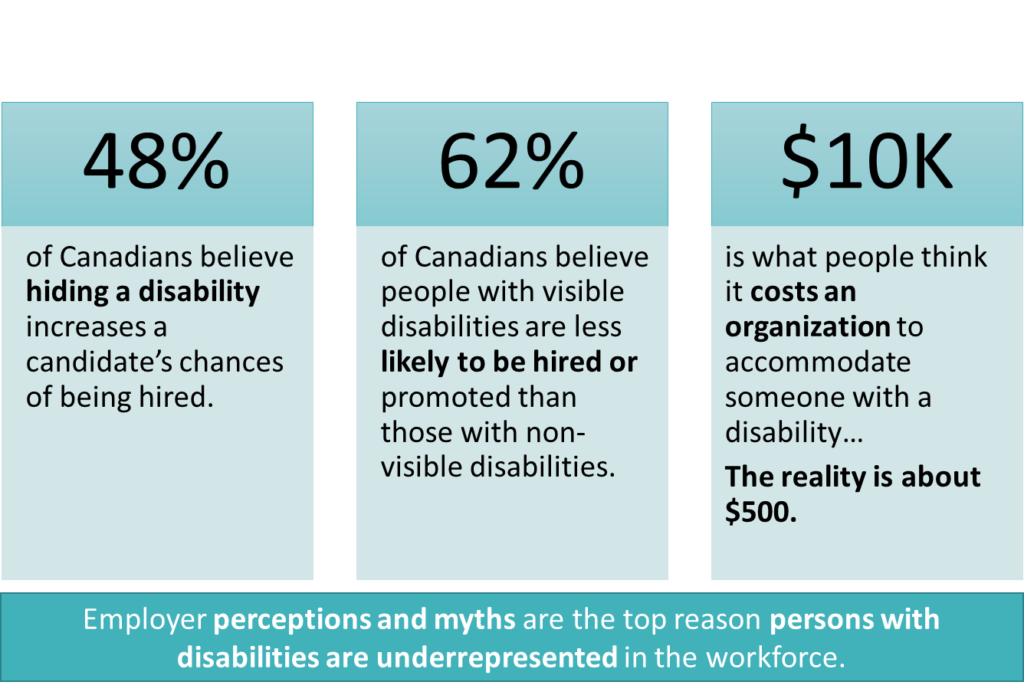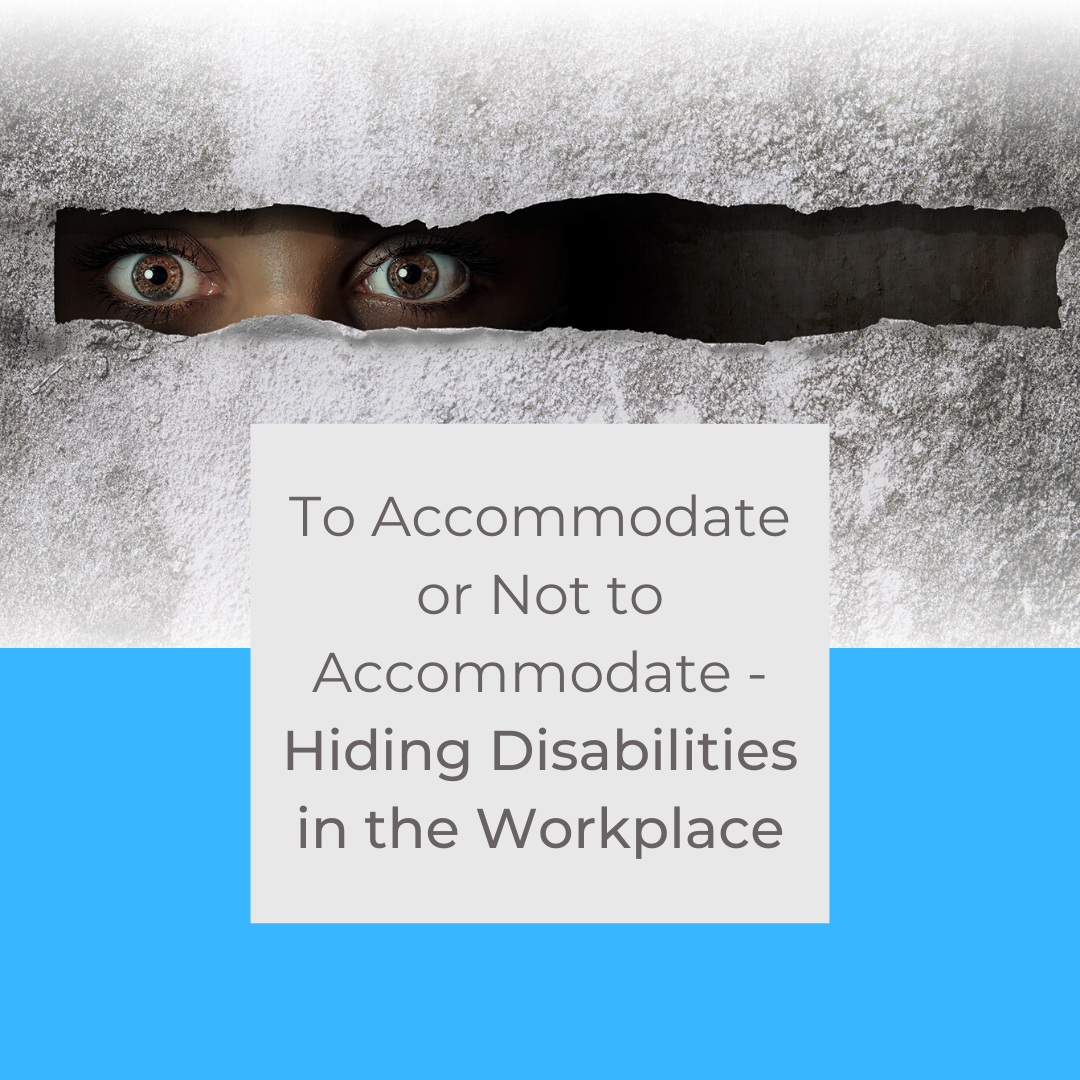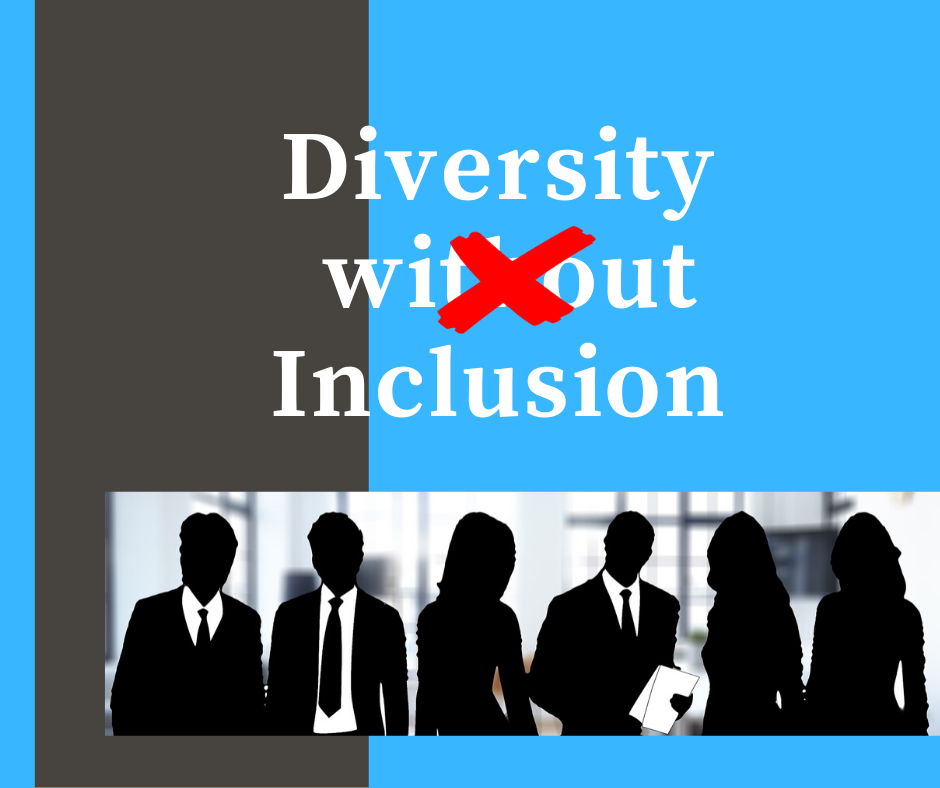What do Canadians think about disability in the workplace?
A study commissioned by Bank of Montreal found that almost half of Canadians think a disabled person’s chances of being hired increase if they can hide their disability. Asked who would be more likely to be hired or promoted, 62% said persons with invisible disabilities had the advantage.
What does this mean?
These responses point toward a widespread sense that having a disability is a workplace liability and that the best strategy for a would-be candidate is to withhold any information about disabilities from potential employers.
This isn’t always a choice.
Not everyone can hide a disability. Those who require mobility assistance, for example, have no option but to disclose their disability and request the necessary accommodations. But what about an invisible disability – such as autism, gastrointestinal disorders, or chronic pain? For people with these conditions, the immediate impulse may be to keep them concealed in a job interview. Yes, it’s a choice –employees have the right to choose what they reveal to employers, especially when what they reveal is irrelevant to the job. But is this necessarily beneficial in the long run?

Source: BMO Study
Ask for what you need.
Telling an employer about a disability may be the best thing you can do – not just for yourself but for the organization. When you ask for accommodations, it can help you successfully complete job tasks, or make them easier to complete. If you don’t ask for what you need, you might need to find workarounds, which may add more time to task completion times, or even draw attention to the disability you’re trying not to reveal.
What are some examples?
- Gastrointestinal disorders are a good example. Because they may necessitate frequent trips to the bathroom. If you’re away from your desk often, it may look like you’re taking unnecessary breaks – sometimes called “time theft.” But what if your employer knew the reason for these brief absences? The two of you could work together to find a solution, whether it be adding 15 minutes to your “official” workday or moving to more of a project-based compensation system.
- Depression is another common hidden disability that can contribute to frequent absences and even put your job in jeopardy. But what if you were able to confide to your employer about the challenge? Fact is, almost a quarter of Canadians suffer from depression or anxiety, and supports are available. Again, you could work with your employer to devise a system for checking in and getting through bad patches.
- Cognitive disabilities may also hide under the radar while reducing performance. Dyslexia, for example, may make it difficult to read as quickly as colleagues and require particular formats to optimize reading speed. What if you could tell your employer exactly what you need, and thereby bump up your own performance?
For more examples check out our blog: Famous people you probably didn’t know had a disability.
What does this do to workplaces?
A workplace culture where a disability represents a shameful secret, and where disabilities are “ranked” by how evident they are, has some detoxifying to do. Being uncomfortable asking for accommodations has a negative impact not just on persons with disabilities, but on “able” colleagues as well because it fosters a culture of “every person for themselves.” From time to time, we all need accommodations – some disabilities are temporary, such as a broken leg or a period of cancer treatment. Wouldn’t it be great to know that when you need accommodations, your workplace is open to providing them?
Such workplace cultures also foster false notions about what people with disabilities can and cannot do. In such environments, stereotypes flourish and reinforce the instinct to hide a disability. Stigma attaches itself to people with both visible and invisible disabilities, erodes teamwork, and contributes to a culture of judgment and negativity.
How can workplaces make things better?
Fortunately, organizations are recognizing disability as a piece of the diversity puzzle. As HR departments develop strategies for diversity and inclusion, they see how disability is simply an identity marker, like race or culture or gender, and that a diverse workforce is better when it represents the population at large, including people with disabilities.
Moreover, statistics show it’s not financially onerous to hire and provide accommodations for people with disabilities. They tend to remain longer in jobs, perform to satisfactory or above-average levels, and make positive contributions to an organization’s productivity, financial bottom line and culture.
Employers.
For employers who are unsure about hiring persons with disabilities, there are government guidelines. In fact, employers have a duty to accommodate, protected under the Canadian Human Rights Act. Supports are available to help employers and employees determine what accommodations are appropriate and reasonable.
Employers who are concerned that accommodating persons with disabilities will cause them undue cost or hardship would benefit from reading the regulations; they may find their fears are unfounded, as they are under no obligation to change existing job descriptions or job requirements, and any requested accommodations must be feasible and plausible. A best practice is to create a policy and a system for documenting requests to avoid misunderstandings or
Suggested process for employees and employers:
- Discuss special need.
- Discuss accommodation.
- Gather supporting information about accommodation, strategies or solutions.
- Choose and implement solutions.
- Monitor for effectiveness.
- Fine-tune as needed.
conflicts. Encourage employees to ask for what they need. And include a statement of your commitment to diversity and inclusion in every job posting.
The bottom line.
There are compelling reasons to consider disability when looking at an organization’s diversity profile. For employers who don’t know where to start, the Canadian government hosts a list of resources, and a diversity and inclusion consultant can sit down with you to design procedures that are tailored to your organization.
If you suffer from a disability or any condition – know you are not alone. With the proper support and intervention, you can overcome. You are, by law, protected and should be supported in the workplace. For more information on how to ensure you are supported at work, check out our blog 6 Ways to Start Thinking about Workplace Accessibility Right Now. Contact us if you need support or further information. We’d be glad to help.
Diversation Question
Does it surprise you that people feel it is beneficial to hide their disabilities in the workplace in order to excel? What are your thoughts around workplace accommodation? Use the comments section below to share your thoughts, experiences and/or comments.




